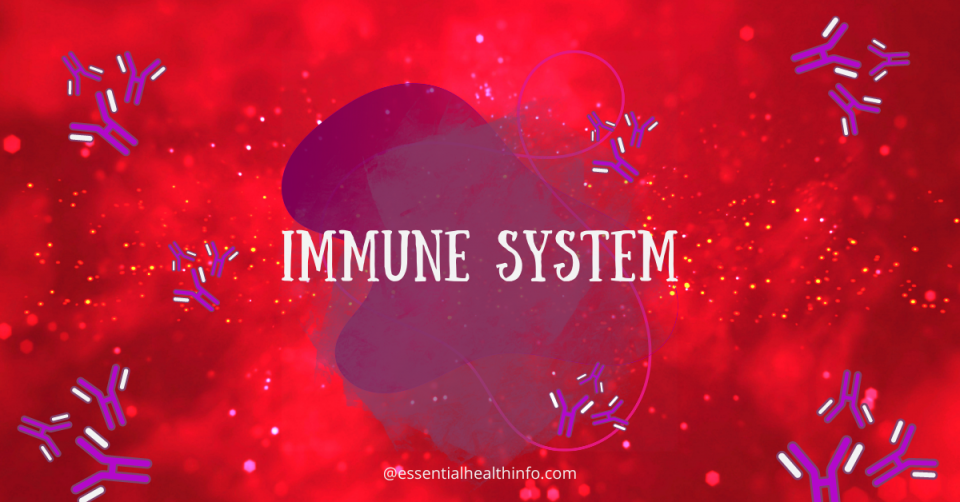According to scientists, the human body defenses are a complex and multilevel network of innate and adaptive protections (Professor et al., 2021). These defenses are more specifically called, the first, second, and third line of defenses. Do you know that these human defense systems do not operate separately from one another? In other words, the defenses will overlap one another to assault microbial invaders to their demise.
First Line of Defense
This line of defense includes any anatomical and physiological barriers that inhibit microbes from invading through the key portals of entry. As some scientists say, “the skin forms a physical, chemical, and biological barrier that plays a significant role in preventing entry of pathogens at the body’s surface if the skin is intact (Mckinley et al., 2018)”. Moreover, there are three subcategories that defend our body under this line of defense- physical, microbiota, and chemical barriers. For example, can you think of a physical defense barrier that protects our body’s internal environment? If you said skin, then you are correct!
As we mentioned in How Infections Lead to Disease, the skin is our most prevailing physical barrier since its made of tough keratinocytes. Unless there is a break in the skin like a cut, abrasion, or even a more severe cut such as surgery, nothing from the outside should pass through. Also, tiny resident microbes called normal biota exist in a safe and steady relationship within us, protecting us from incoming pathogenic microbes. Did you know that our skin has a high salt toleration? Many microbes (bacterium) cannot survive in high salt concentrations. Microbes such as Staphylococcus aureus are highly salt tolerant, which means they can grow and inhabit our skin as much as they do in other areas. These microbes protect us by eating the nutrients other invading microbes would want to survive. Isn’t the human body amazing!
As far as chemical barriers, our sebaceous glands produce oil that is low in pH (like a salty concentration) that washes away, lysozymes (breaks down cell wall in some microbes), and destroys any pathogenic microbes (pp. 872). Furthermore, our saliva, tears, and nasal secretions all have lysozyme defenders as well. However, did you know that coughing, sneezing, defecating (number two), urinating, and even vomiting eliminates any pathogenic microbes? Not to mention, a low HCl in our stomach destroys most microbial toxins (pp. 872). So let’s gloss over and review the processes involved in the first line of defense (pp. 872):
Skin
- Epidermis, dermis (provides a physical, chemical, and biological barrier)
- normal flora (resident microbiota that prevent growth of pathogenic microbes)
- exfoliation e.g., sweat (removing potential pathogens from surface)
- sebaceous oil gland secretions (create a low pH that prevents growth of microbes)
- Sweat gland excretions (contains lysozymes that combat and destroy microbes)
Mucous Membranes
- epithelial and connective tissue (lining of respiratory tract, G.I. tract, urinary, reproductive)
- normal flora (resident microbes that prevent growth of pathogenic microbes)
- mucus (contains lysozymes, secretions help trap microbes)
Upper Respiratory Tract
- nasal secretions (contains lysozymes, secretions trap and wash away pathogenic microbes)
- hairs in nasal cavity
- cilia (sweep mucus in the respiratory tract that can be pushed out or swallowed)
- coughing and sneezing (eliminates microbes or foreign substances from the body)
G.I. & Urinary Tract
- saliva (washes away microbes)
- Hydrochloric acid (HCl) (acid produced in stomach creates low pH to destroy microbes and bacterial toxins)
- defecating and vomiting (removal of waste from G.I. tract and eliminates microbes before they can be absorbed in the blood)
- urine (flushes microbes from urinary tract)
- lactate (produced by the vagina creating a low pH and slows and prevents the growth of microbes)
Immune System
The second line of defense is called innate immunity where cells, fluids, and other processes protect the internal system. If an infectious agent makes it past this line of defense, then a cellular and chemical system will respond.
Phagocytosis
First, activities of cells such as phagocytosis will occur. The phagocytic cells- macrophages, neutrophils, and dendritic cells engulf unwanted cellular debris and infectious agents. Through phagocytosis, these cells digest unwanted material, destroy bacteria and viruses (pp. 866). Do you know when pus is produced during infection it contains destroyed pathogens, dead phagocytes, and cellular debris? Similarly, during your visit with a doctor, he or she will run tests on you such as differential counts of white blood cells, a process that measures the number of leukocytes in the blood (pp. 866). Do you know why? For example, an acute bacterial infection shows an increase of neutrophils in the blood. Also, an elevated number of lymphocytes determines a viral infection or chronic bacterial infection in the body. Each differential counts show high levels of cells that have recently responded through phagocytosis to an infectious agent.
The purpose of phagocytosis is the following (Professor et al., 2021):
- to survey the tissue compartments and discover microbes, particulate matter (dust, carbon particles, antigen-antibody complexes), and injured or dead cells.
- to ingest and eliminate these materials; and
- to read immunogenic information (antigens) from foreign matter
Fever
The second line of defense includes two very well-known biological process- fever and inflammation. A fever is a physiological process of an innate immune system accompanied by inflammation. Do you know the difference between a sign and a symptom? A sign can be measured while a symptom is merely felt in the body like body aches. However, a fever is a sign measured in Fahrenheit or Celsius, as a deviation from an abnormal body temperature of at least 1 ºC or 1.8 ºF from the core body temperature 37 ºC or 98.6 ºF (Mckinley et al., 2018). Other reasons for a fever to happen include-
- indication that a substance has been released from a bacterial cell
- immune cells recently responded to an infection, trauma, drug reactions, and brain tumors (pp. 871)
A fever can be onset where blood vessels are vasoconstricted (tightened) to decrease heat loss through the skin. This response is initiated by a signal from the hypothalamus. Also, once an onset fever occurs, our body’s will shiver, which is the action of muscles contracting. Finally, a fever inhibits replication of bacteria and viruses, promotes interferon activity, increases activity of lymphocytes, and accelerates tissue repair (pp. 871). Therefore, we hear physicians recommend to patients to, “let the fever run its course” (pp. 871).
These are the benefits of fever (Professor et al., 2021)-
- Fever inhibits multiplication of temperature-sensitive microorganisms such as the poliovirus, cold viruses, herpes zoster virus, and systemic and subcutaneous fungal pathogens.
- Fever interferes with the nutrition of bacteria by reducing the availability of iron.
- Fever increases metabolism and stimulates immune reactions and naturally protective physiological processes. It speeds up hematopoiesis, phagocytosis, and adaptive immune reactions and helps specific lymphocytes home in on sites of infection.
Inflammation
Did you know that when an inflammatory response occurs in the body it’s helping us recover from an infection or injury? It appears in the nasty flare of a cat scratch, the blistering of a burn, the painful lesion of an infection, and the symptoms of allergy (pp. 361). An inflammatory response is the net movement of additional fluid from the blood through the infected or injured area and then into the lymph nodes (Mckinley et al., 2018). When the fluid leaves the capillaries and into the tissues, it eliminates the injurious or infected agent to promote recovery. Factors that elicit an inflammatory response are trauma from infection, tissue injury or necrosis (death of tissue), and adaptive immunity reactions. Therefore, the purpose of inflammation is to (Professor et al., 2021)-
- to mobilize and attract immune components to the site of the injury,
- to set in motion mechanisms to repair tissue damage and localize and clear away harmful substances, and
- to destroy microbes and block their further invasion.
These are the universal symptoms of inflammation (Mckinley et al., 2018):
- redness (from increased flow of blood)
- heat (increased metabolic activity in that area)
- swelling (fluid that moves from the capillaries into the tissues)
- pain (stimulated pain receptors from compression of fluid accumulated into the tissues, even substances released by microbes)
- loss of function (severe cases of inflammation)
Inflammation can affect the entire system- blood vessels, lungs, skin, joints, and more. Lastly, did you know that the type of inflammation mentioned above is imperative to prevent damaging effects of chronic inflammation?
Third Line of Defense
Scientists suggest, “as the metabolic rate increases, it promotes physiologic processes of the innate and adaptive immune systems that are involved in eliminating the harmful substance (Mckinley et al., 2018).” In other words, if an infection gets past the first two defenses, then a serious response is required by providing complex ground forces to eradicate the foreign substance. An antigen is a substance that binds to an adaptive immune lymphocyte (antibody). A foreign antigen is a non-self-antigen that does not naturally belong in the body. For example, let’s talk about autoimmune diseases.
An autoimmune disease occurs when the immune system cannot recognize a self-antigen and therefore initiates an immune response as if they were foreign. Altered self-antigens occur when a microbe changes a specific protein in the body (a self-antigen) and immune cells respond to it as if it were foreign (pp. 875). Type 1 Insulin-dependent diabetes results in a microbe changing the protein of cells in the pancreas, which elicits an attack from the body’s immune system. Finally, immune privilege are structures within the body that limits the access of an immune cells to warrant an attack on any foreign substances (in areas like the eyes, brain, ovaries, testes, placenta) (pp. 875).
Summary
A healthy functioning immune system is responsible for these (Professor et al., 2021):
- supervision of all systems
- identifying foreign invaders
- destroying anything that is or “deemed” to be foreign
As mentioned before, the immune system does not function as a single unit. It is large and complex. It has a network of cells and fluids that permeate the organs and tissues (pp. 349). The first line of defense is our skin barrier and some internal barriers like lysozymes that help fight off infectious agents or foreign substances. The second line of defense is centralized around phagocytosis, the cornerstone of inflammation and adaptive immunity. Finally, the third line of defense is the adaptive immunity, which is a defensive connection between the second and third lines of defense that mostly involves a major immune response. Our body is well prepared to fight off infections as well as recover itself from minor to major injuries. As science continues to revolutionize medicine and medical procedures, we will observe exceptional aid to help our bodies live longer and healthier.
References
Mckinley, M., O’Loughlin, V., & Bidle, T. (2018). Anatomy & Physiology: An Integrative Approach (3rd ed.) [E-book]. McGraw-Hill Education.
Professor, C. M. K., Smith, H., & Lusk, J. (2021). ISE Microbiology Fundamentals: A Clinical Approach (ISE HED MICROBIOLOGY). In Microbiology Fundamentals: A Clinical Approach (4th ed.,). McGraw-Hill Education.


